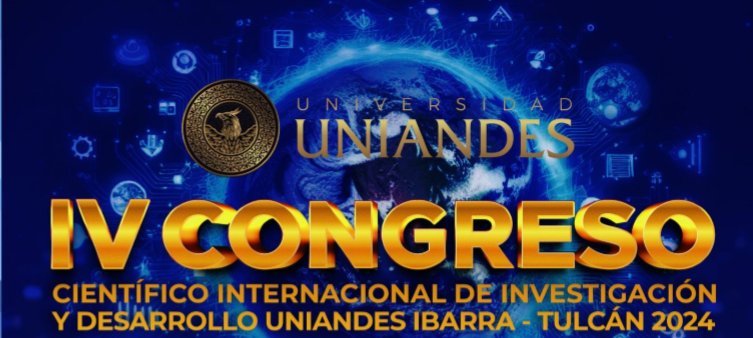Use of artificial intelligence in the diagnosis of cervical alterations
Keywords:
inteligencia artificial, cáncer cervical, lesiones premalignas, diagnóstico precoz, aprendizaje automáticoAbstract
The development of artificial intelligence (AI)-based technologies has revolutionised the diagnostic approach to gynecological diseases, particularly cervical cancer. Trough the analysis of machine learning algorithms and neural networks applied to cytology, colposcopy and digitized Pap smear images, the literature reveals a significant improvement in diagnostic accuracy, minimizing human error and enhancing screening efficiency in high-risk populations. The objective of this research consists in to describe the state of the art of the use of artificial intelligence in the diagnosis of cervical alterations. This article is developed as a systematic review on the application of artificial intelligence (AI) for the detection of premalignant cervical cancer lesions; the methodology used is structured under the principles of PRISMA, with a mixed approach, combining qualitative analysis of relevant scientific studies with quantitative synthesis of results on the efficacy of AI in the early diagnosis of premalignant lesions. It concludes that AI is a promising tool to strengthen cervical cancer prevention programs.Downloads
References
Li J, Yang Z, Wang T, Li M, Wu X, Fu X, et al. Causal relationship between lipid-lowering drugs and ovarian cancer, cervical cancer: a drug target mendelian randomization study. BMC cancer. 2024 [citado 08/07/2024];24(1):667. Disponible en:
https://pmc.ncbi.nlm.nih.gov/articles/PMC11143665/
Medina Ruiz L, Chahla RE, Vega Italia M, Ortega ES, Barrenechea GG, Ferre Contreras M. Inteligencia Artificial: precisión diagnóstica de lesiones preneoplásicas de cérvix uterino. Medicina (B. Aires) 2024 [citado 06/07/2024];84(3):459-467. Disponible en: https://www.scielo.org.ar/scielo.php?script=sci_arttext&pid=S0025-76802024000500459&lng=es
Rahaman MM, Li C, Yao Y, Kulwa F, Wu X, Li X, et al. DeepCervix: A deep learning- based framework for the classification of cervical cells using hybrid deep feature fusion techniques. Comput Biol Med. 2021 [citado 08/04/2024];136:104649. Disponible en: https://www.sciencedirect.com/science/article/abs/pii/S0010482521004431?via%3Dihub
Ciro marín DA, Hurtado Soto SA. Identificación de anomalías de las células cervicales mediante inteligencia artificial [Tesis]. [Bogotá, Colombia]: Universidad EAN;2024.47p. Disponible en:
Hou X, Shen G, Zhou L, Li Y, Wang T, Ma X. Inteligencia artificial en la detección y el diagnóstico del cáncer de cuello uterino. Oncol Frontal. 2022 [citado 08/07/2024];12:851367. Disponible en:
Egemen D , Perkins RB , Cheung LC, Befano B , Cecilia Rodriguez AC, Desai K, et al. Artificial intelligence-based image analysis in clinical testing: lessons from cervical cancer screening. J Natl Cancer Inst. 2024 [citado 08/07/2024];116(1):26-33. Disponible en: https://academic.oup.com/jnci/article/116/1/26/7284113
NIH. Planteamiento de IA superó a expertos humanos en la identificación de precáncer cervical. EE.UU:NIH. 2019 [citado 02/05/2024]. Disponible en:
Poudel K, Poudel L,Raj Shakya P, Poudel A, Shrestha A, Khanal B, et al. AI-Assisted Cervical Cancer Screening. arXiv. 2024 [citado 06/07/2025]. Disponible en: https://arxiv.org/html/2403.11936v2
Ma Y, Tao Xu, Huang X, Wang X, Li C, Jerwick J ,et al. Computer-Aided Diagnosis of Label-Free 3-D Optical Coherence Microscopy Images of Human Cervical Tissue. IEEE Trans Biomed Eng. 2019 [citado 05/09/2024];66(9):2447-2456. Disponible en: https://pmc.ncbi.nlm.nih.gov/articles/PMC6724217/
Li H, Sun Y, Zhu C, Zhang Y, Zhang S, Shui Z, et al. Large-scale cervical precancerous screening via AI-assisted cytology whole slide image analysis. arXiv. 2024 [citado 06/07/2025]. Disponible en: https://arxiv.org/pdf/2407.19512v1
Wu T, Lucas E, Zhao F , Basu P, Qiao Y. La inteligencia artificial fortalece la detección del cáncer de cuello uterino: presente y futuro. Cancer Biol Med. 2024 [citado 08/06/2024];21(10). Disponible en: https://www.cancerbiomed.org/content/cbm/21/10/864.full.pdf
Saco I. Prueban la inteligencia artificial para detección precoz del cáncer cervical. La Vanguardia. 17/11/2020 [citado 08/07/2024]. Disponible en:
Ahmadzadeh Sarhangi H, Beigifard D, Farmani E, Bolhasani H. Deep Learning Techniques for Cervical Cancer Diagnosis based on Pathology and Colposcopy Images. arXiv. 2023 [citado 09/05/2024]. Disponible en: https://arxiv.org/abs/2310.16662
Medina Ruiz L, Chahla RE, Vega IM, Ortega ES, Barrenechea GG, Ferre Contreras M. Inteligencia artificial: precisión diagnóstica de lesiones preneoplásicas de cérvix uterino. MEDICINA (Buenos Aires). 2024 [citado 06/07/2024];84:459-467. Disponible en: https://www.scielo.org.ar/pdf/medba/v84n3/1669-9106-medba-84-03-459.pdf
Vargas Cardon HD, Rodríguez López M, Arrivillaga M, Vergara Sánchez C, García Cifuentes JP, Bermúdez PC, et al. Inteligencia artificial para la detección del cáncer de cuello uterino: análisis del alcance, 2009-2022. 2023 [citado 05/09/2024];165(2):566-578. Disponible en: https://obgyn.onlinelibrary.wiley.com/doi/full/10.1002/ijgo.15179
Dellino M, Cerbone M, d’Amati A, Bochicchio M, Laganà AS,Etrusco A, et al. Artificial Intelligence in Cervical Cancer Screening: Opportunities and Challenges. AI. 2024 [citado 09/02/2024]5(4). Disponible en: https://www.mdpi.com/2673-2688/5/4/144
Zhu X, Yao Q , Dai W, Ji L, Yao Y, Pang B, et al. Cervical cancer screening aided by artificial intelligence, China. Bull World Health Organ. 2023 [citado 05/06/2024];101(6):381-390.Disponible en: https://pmc.ncbi.nlm.nih.gov/articles/PMC10225939/
Das S,Panda SK, Sethy M, Paramita Giri P, Nanda AK. Comparative analysis of machine learning and deep learning models for classifying squamous epithelial cells of the cervix. arXiv. 2024 [citado 08/07/2025]. Disponible en: https://arxiv.org/abs/2411.13535
Espinosa Pire LN, Clara Verano N, García Conrado JM. Cáncer de cuello uterino y el papiloma humano. Neutrosophic Computing Machine Learning. 2021 [citado 05/09/2024];17:25. Disponible en:
Divya S, Neerja B . Artificial Intelligence in Cervical Cancer Screening. J Colposcopy Lower Genital Tract Pathology. 2023 [citado 05/08/2024];1(1):15-19. Disponible en: https://journals.lww.com/jclgtp/fulltext/2023/01010/Artificial_Intelligence_in_Cervical_Cancer.4.aspx
OPS. Directrices de la OMS sobre tamizaje y tratamiento de las lesiones precancerosaspara la prevención del cáncer cervicouterinon. Washington, D. C: OPS; 2024 [citado 08/08/2025]. Disponible en:
https://iris.paho.org/bitstream/handle/10665.2/62990/9789275329412_spa.pdf
Bao H, Sun X, Zhang Y , Pang B , Li H, Zhou L, et al. The artificial intelligence-assisted cytology diagnostic system in large-scale cervical cancer screening: A population-based cohort study of 0.7 million women. Cancer Med.2020[citado 05/07/2024]; 9(18):6896-6906.Disponible en: https://onlinelibrary.wiley.com/doi/full/10.1002/cam4.3296
Published
How to Cite
Issue
Section
License
Copyright (c) 2025 Sylvia del Pilar Núñez Arroba, Christopher Antony Arcos Mayorga, Marjorie Solange Pérez Montero

This work is licensed under a Creative Commons Attribution-NonCommercial 4.0 International License.
ACCESS AND DISTRIBUTION POLICY
All published articles are open access contributions, which are distributed under the terms of the Creative Commons Attribution-NonCommercial 4.0 License which permits unrestricted non-commercial use, distribution and reproduction in any medium, provided that the primary source of publication is properly cited.




